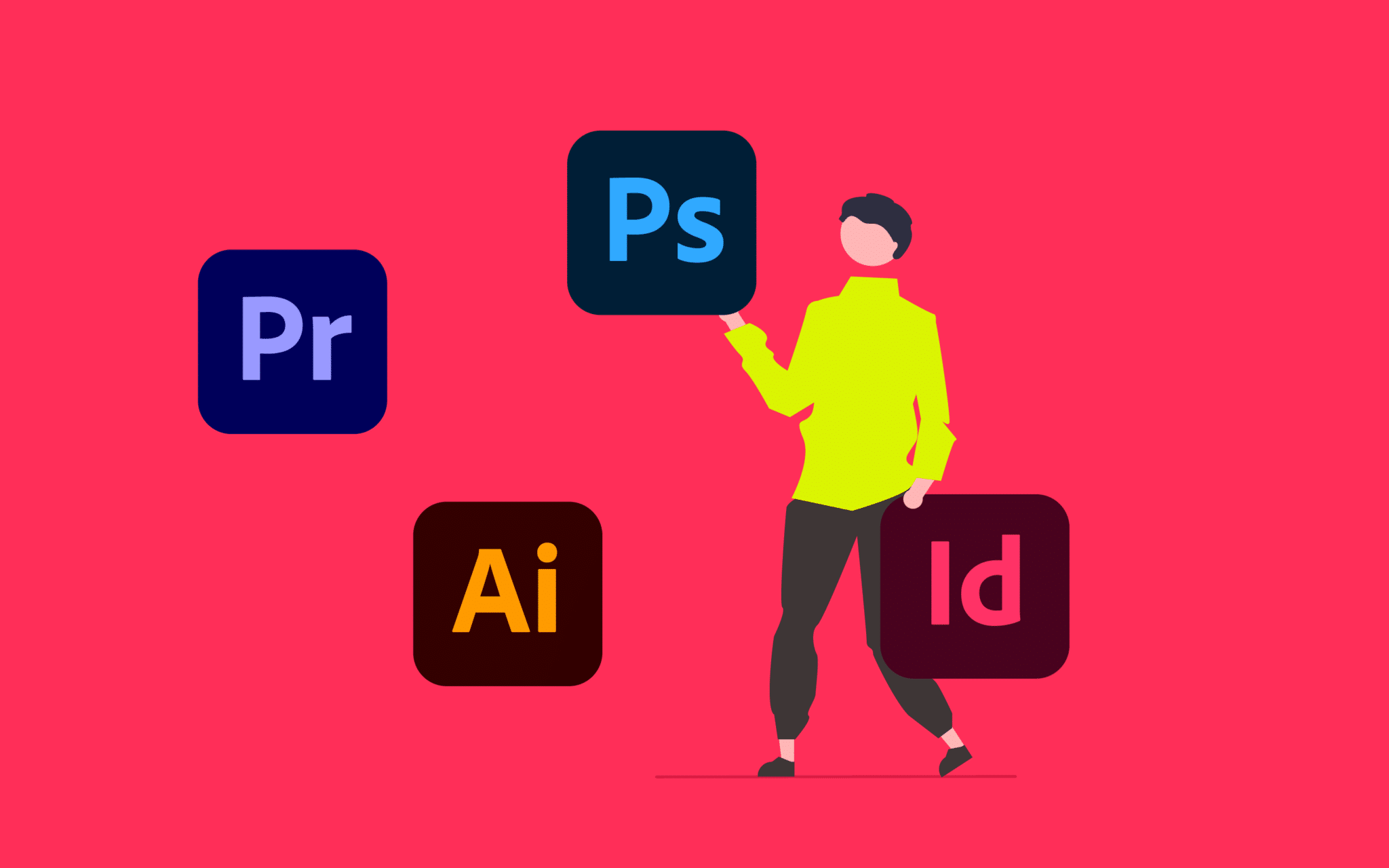Welcome to topic 3 – Develop Conceptual Skills and Ideas. The purpose of this topic allows you to experiment with different ideas and techniques and identify opportunities for improvement, while exploring the work of others. Sharing your ideas with others is encouraged.
You will be introduced to the following topics:
- Experimentation and exploration
- Ideas and techniques
- Investigations into contemporary practice
- Communication of ideas
- Self-reflection and documentation
It is extremely rare for anyone to sit and wait for any creative design solutions to come to fruition. You need to experiment with a range of ideas, materials or techniques and explore possible solutions that may not have been considered previously. Creative exploration requires a disciplined process to thrive. Here are three ways you can set the stage to craft the discovery phase of the design process — through immersion, incubation and improvisation.
1. Immersion
This means getting deeply involved in a problem space.
- Tackle a problem from multiple angles — find analogous systems, look at secondary research, consider trends, existing solutions, competitive landscape, and so on.
- Absorb related content (e.g. videos, forums, podcasts, online communities).
- Use narratives or storyboards to draw potential interactions.
2. Incubation
Incubating involves setting aside time for individual reflection and focus.
- Ask “How can I… [insert improvement here]”.
- Re-assess your ideas against a criterion of principles that have been given to you as part of an assignment brief.
- Take time to unwind and detach from the problem, which might mean temporarily switching to another project, whatever you do in your downtime to relax.
- Get some sleep. Rest is an unspoken but important part of the process!
3. Improvisation
To improvise, collectively experiment and explore lots of ideas. Once you’ve reached this stage, it means you’ve done plenty of preparation for getting into a state of “flow” for generating ideas.
- Build off the ideas of other design solutions.
- Collect inspiration to help you play around with potential concepts.
- Embellish and infuse ideas with your perspective.
- Quantity matters more than quality; refining comes later.
- Only after you have a deep understanding of something can you improvise freely.
In the educational system, failure is highly discouraged. Failing an assignment or a course sends us a message that “we are dumb” or “inadequate” but is an indicator tied to assessment rather than learning. Ultimately, it conditions you toward a self-limiting belief that the act of trying is not worthwhile. This is problematic when it extends to adulthood as we become more risk-adverse and critical of new ideas.
Success consists of going from failure to failure without loss of enthusiasm.Winston Churchill
Failure can play out in two ways: the right way to approach failure is as a catalyst that can lead to growth and learning. The wrong way is to let it block you from trying new things out of the sense of fear or risk avoidance. While there is no single formula for success in a design process, this framework may help you clarify and overcome creative blocks.
Ideas and Techniques
The need to consistently engage in ongoing experimentation and exploration of different ideas and techniques is an important part of the design process. The value of playing with visual methods, materials, and form as an essential element of the design process. Sometimes the precise value and intention of a visual experiment may not be as calculated as you may have thought. The exploration of potential tools for mark-making, or a playful, visually led creation can lead to a variety of aesthetic possibilities. The adoption or adaptation of tools, techniques, or modes of communication are useful experiments for the designer in and of themselves, even if their specific value at the time is not known. For many designers, research is a necessary activity in exploring how best to arrive at a meaningful and effective solution to the needs of a client and the demands of a brief.
Risk-taking, attempting radical new methods, and embracing alternative approaches are key to the production of original and exciting design. We have already discussed the making of mistakes (or as the late TV artist, Bob Ross refers to them as ‘happy accidents’) demonstrates that risks have been taken, that the designer has thought laterally, outside of the box, and that the range of implied boundaries that delineate standard methods and practices have been bypassed in the pursuit of original and unexpected results. Innovative and new design needs to make such mistakes, rather than to rely on established conventions and ways of reflecting the world.13
You can keep a library of notebooks and visual diaries as visual notebooks can be seen as an example of the designer developing his or her own visual language and techniques, which can be drawn upon subsequently as the need arises. It is important for the designer to understand the range of visual languages and texts that already exist in the space that the proposed design will occupy. All audiences have expectations with which they interrogate and interact with visual messages.
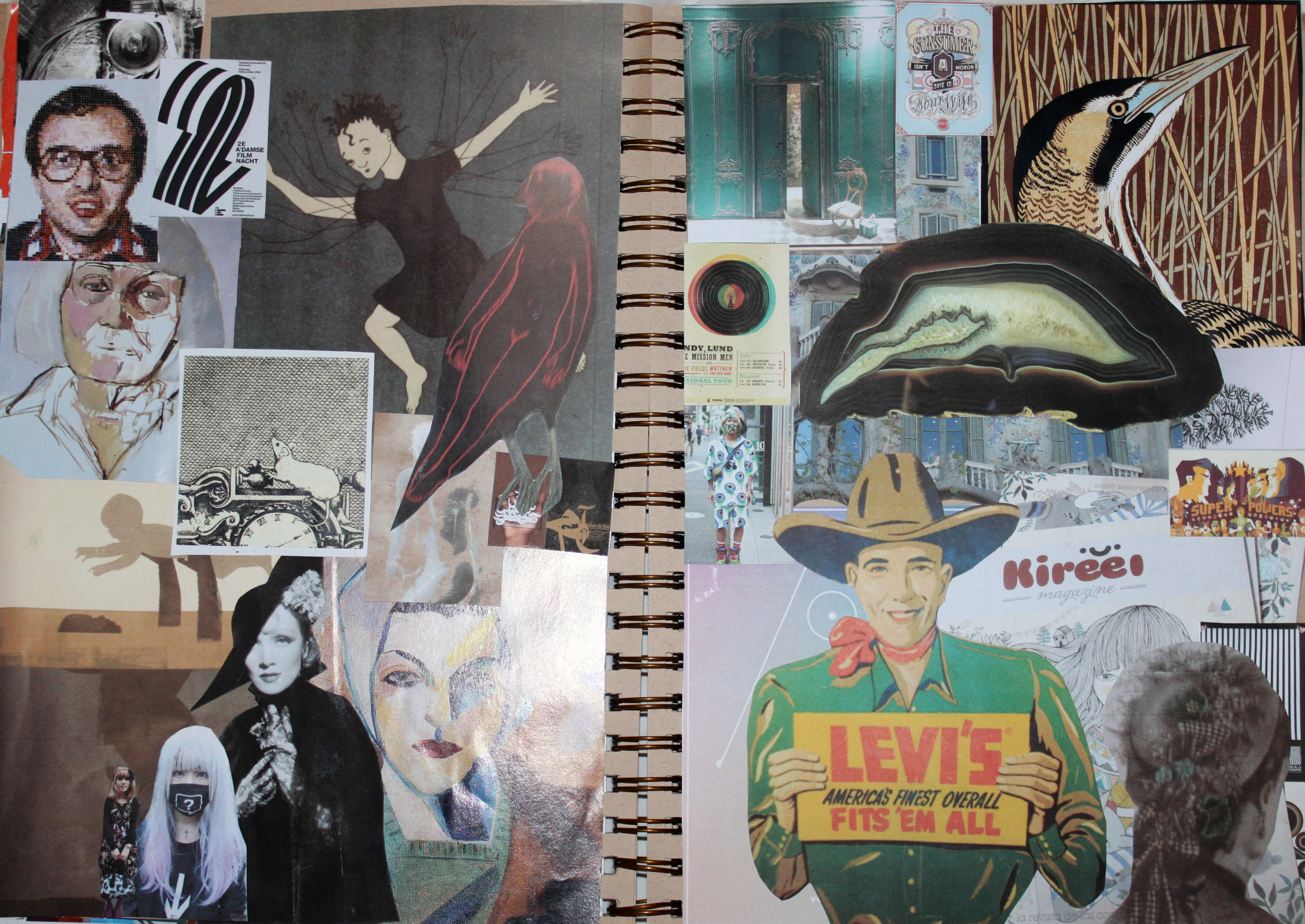
The exploration of a theme that interests the designer and the graphic response to that theme, which might enlighten and help describe new visual languages that are applicable to other graphic solutions, is a core part of design.
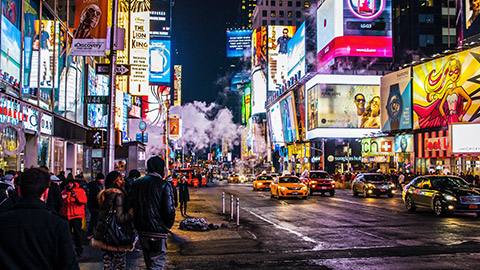
We live in a world that thrives on visuals. Ever since companies discovered that they could differentiate themselves through professional brand photography, memorable logos and standout visual identity design, the need for slick and effective graphic design has kept talented professionals in demand. Fundamentally, the role of the graphic designer has changed, from a one-off contractor to an essential part of any business team. Today’s industry relies on their designers not just to create logos and tactical communication pieces, but to establish presence for them in the online world and build recognition for their brand. Graphic design isn’t just about the artwork anymore, it’s about the process of establishing a real connection between customers and companies using words, tone, images, design, and technology. The way that graphic designers/artists function and approach their creative briefs can be as inspirational as their work itself.
The study of other graphic design practitioners is crucial to contextualise your work according to your design ethos and concept. The process can widen your horizons, allowing yourself to be influenced by the work or the concept of your chosen artist or designer. Just as important is discussing why you chose that individual as research or inspiration on your own creative outcomes or processes in the first place.
Graphic design is a creative process that does more than simply respond to a client’s brief. There are many ways to respond to a brief and the demands it contains, and each will provide solutions that produce differing levels of success. Creative design explores the wider themes to find the optimum solution to a brief.
Expanding Knowledge
There are different approaches that can be taken when thinking about design. A design problem can be approached from various perspectives using different methodologies, which can all aid a designer to develop a workable solution. The approach taken will depend upon the nature of the job in hand, as well as the experience and preferences of the designer. Experienced creative designers refrain from following the same processes every time; using different methods allows a problem to be viewed from different perspectives, which provides a means for the unexpected to enter the piece.
There are many designers, (not necessarily graphic) whose work can influence you to think of creative solutions that are innovative and at times, unexplored at the beginning of a design brief. Look at how other designer’s approach their work. Not only could this influence how you approach your work but can also influence your design outcomes. That is not to say you plagiarise the work of others, you are merely influenced by their methodology. You need to include the study of other’s work in your research, which was discussed in Topic 2.
A Tale of 12 Kitchens is a cookbook written, photographed, designed, and typeset by Jake Tilson. The author’s eclectic style draws on the nostalgia and rhetoric of his everyday life. His design brings an entirely new vision to food – its context, the way it is grown, packaged, bought, and cooked – and evokes powerful memories and emotions. It is a great example of being creative outside of the box.14
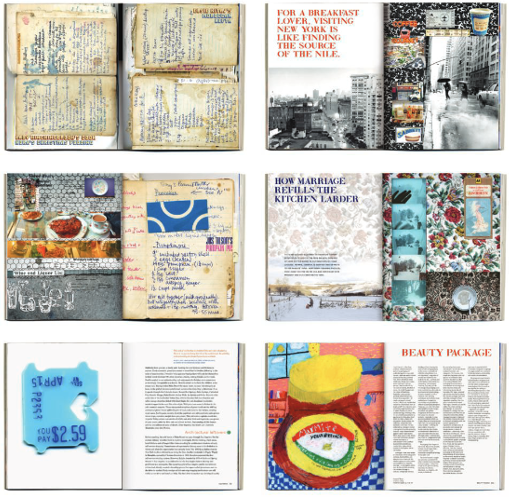
Here are twenty (20) contemporary graphic designers to explore further.
Is this what you think a graphic designer looks like?
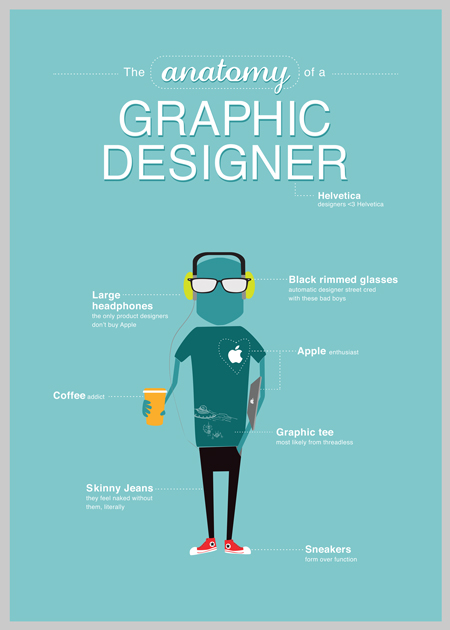
You also need to be aware of designers who are more well known, and how they can have impact in your own graphic design practice. This is by no means an exhaustive list; however, it will provide you with a good starting point. Also look at their work practices and their use of technology.
Paul Rand didn’t only have a notable career as a graphic designer and art director but shaped the way a corporate logo looks today. He was behind the IBM, ABC, Enron, Morningstar, UPS, and many other logo designs, as well as the corporate identities that they use to this day. Rand famously developed the Next Computers brand identity for $100,000 for Steve Jobs.
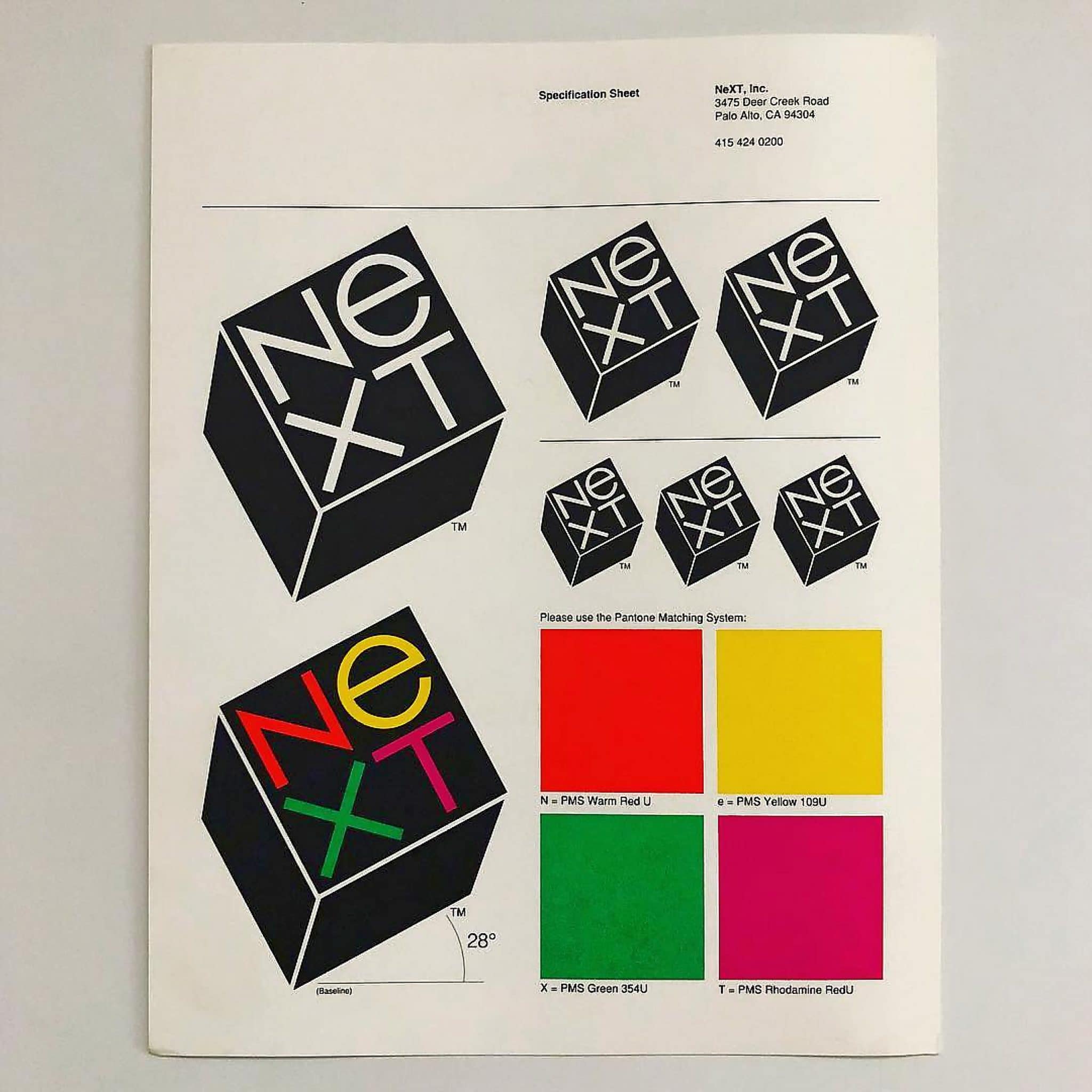
Peter Saville is deemed one of the most popular British graphic designers and art directors of the generation. Saville designed several record sleeves for Factory Records artists. Some of his notable clients were Joy Division and New Order.
A well-known design critic Alice Twemlow described Saville’s design practice as that he would irreverently pick an image from some historical art and then de-contextualise and recontextualise it in another art. For instance, he combined the colour-coded alphabet with Fantin-Latour “Roses” painting, showcased on New Order’s Power, Corruption and Lies (1983) album cover. In 2004 he consulted as Creative Director of the City of Manchester and in 2010 designed the home shirt for the English football team.15
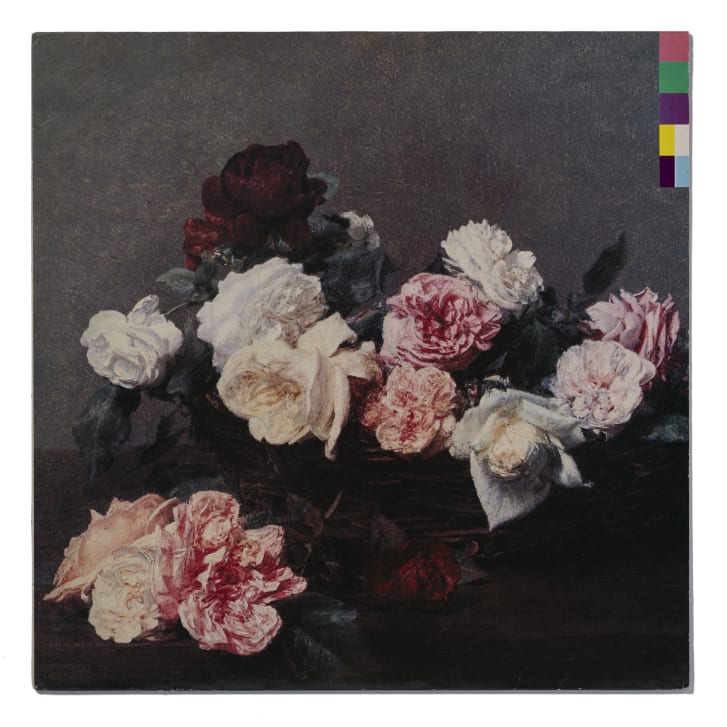
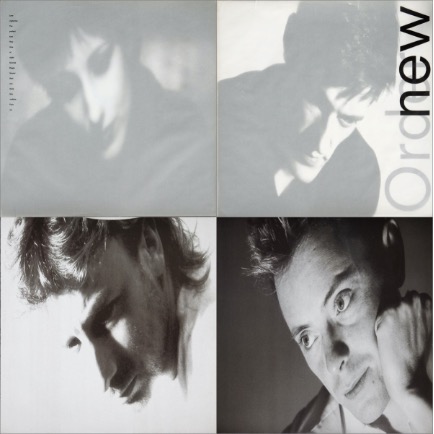
Neville Brody is a recognisable name among the twentieth century English graphic designers. His versatility extends to art direction and typography as well. His well-known works include his contribution to The Face and Arena magazines. He has also designed record covers for several famous music artists, including Cabaret Voltaire and Depeche Mode. He has also worked with Apple, BBC online, The Times, Channel 4 and the England football team.16

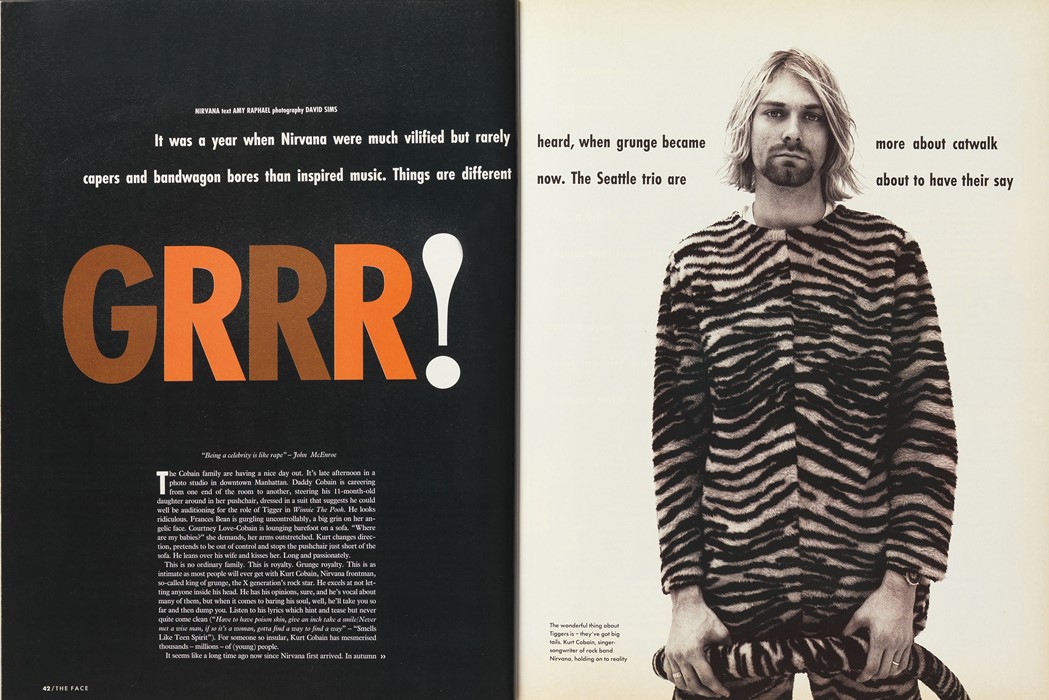
David Carson is a prominent contemporary graphic designer and art director. His unconventional and experimental graphic style revolutionised the graphic designing scene in America during 1990s. He was the art director of the magazine Ray Gun, in which he introduced the innovative typographies and distinct layouts. He is claimed to be the godfather of ‘grunge typography’ which he employed perpetually in his magazine issues.17
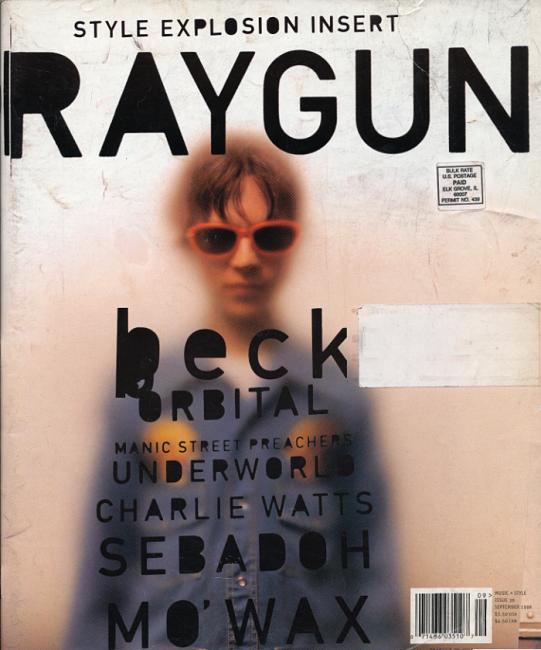
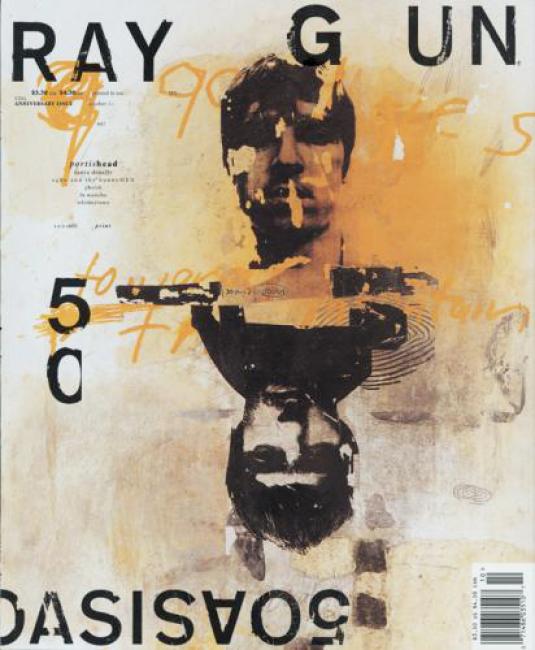

Being able to communicate your ideas effectively is both a learned and practiced skill. It’s crucial that designers focus not only on cultivating their abilities with creative tools but also on improving their ability to communicate design effectively during the design process. Yet, while we are in an age of infinite communication channels and inspirational conversations around design, our ability to communicate design competently is an area in which designers need to improve. Where is the gain in being extraordinary if you can’t communicate your ideas and processes, design concepts, and principles effectively?
First, the ability to communicate design compellingly demonstrates intelligence. It also proves purpose, validating that you have thought about your solutions and that there is logic to your approach. Second, having good communication skills indicates that you have a level of confidence in your own abilities. As practicing designers, you should possess the knowledge and experience to understand the purpose of your designs and aesthetically engaging solutions.
Presentation and Contributions
Design is a discipline shaped by a varied and eclectic set of influences from both the past and present, which inform the choices and decisions made during the design process. Discussing your ideas with others is important for your own professional and personal development. This is considered good practice as it can form new ideas for your work and has the potential for challenging your research searches and sources in the sharing of ideas across design disciplines.
Often, a design problem is not what we initially think it is and it is frequently a good idea to start by questioning the very question that we are asking. Graphic designers draw inspiration from all creative fields including other fields of design, such as furniture and interiors. Indeed, many creative people do not see themselves as being limited to one discipline, and this can be beneficial to you as a graphic design student. Broaden your horizons! Look outside your chosen field for inspiration and exploration. An important part of the design process deals with overcoming creative, practical or economic obstacles. This may sound straightforward, but often, the problem is ephemeral – a feeling that something is not right with a design. Problem solving entails working through the various elements of a design and not simply making assumptions as to what the problem is.
There are many publications for and about the design industry. Lots of design magazines have blogs with content that isn’t printed in the physical edition, and some specialist blogs only make their content available online. These are not only useful for viewing the work of other designers, but for keeping abreast with movements, trends, and technologies within the industry in general. Industry publications also allow a designer to build a contact book and keep track of who is working where, which may be useful in the future.

There are many areas of design practice that you need to be aware of. The disciplines can inform your own design practice, and by exploring the areas of specialisation that are detailed below, it improves your understanding and widens your horizons. Explore the definitions and weblinks below.
Advertising Design - Attracts attention and makes a compelling marketing pitch to an audience’s desire for products or services. Other persuasive advertising, such as political or social messages, encourages audiences to adopt an opinion or change behaviour.
Book Design - Determines the layout of interior pages and covers of books. In some cases, illustrators or photographers also contribute to the design of book covers. Explore award winning books here.
Brand Design - Authentically reflects how a business or organization wants to be perceived by people. Brand is expressed through a graphic identity system, but also includes the products and services the organisation offers and the quality and value of relationships it establishes with people over time.
Design Management - Manages creative activities within a business or design practice to further the mission of the organisation. Design managers focus on the processes and structures through which businesses and consulting firms deliver solutions to communication, product, environmental, and service problems. They seek the triple bottom line of economic, social, and environmental success through strategic and tactical interventions in the decision-making and operations of organisations.
Design Research - Studies how people encounter, use, and experience communication, products, spaces, and services. In contrast to market research—which relies on what people say in surveys and interviews and requires statistically significant results—design research guides design decisions through firsthand observation of what people do. Increasingly, technology also allows design researchers to examine the “faces, places, and traces” of user behaviour in the analysis of digital data. Practice-focused research addresses how design is planned, produced, and distributed.
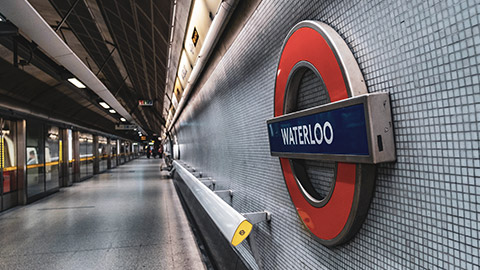
Environmental Signage and Wayfinding - Helps people find their way through streets and buildings, and provides clues to the nature of the environment people find themselves in. The work of wayfinding is to deliver the right directional message at exactly the right time. Visual continuity identifies components as parts of a system and assures users they are on the right paths to their destinations. Contemporary practice is inclusive, an approach to design that considers a full range of users’ physical abilities and cultural differences.
Experience Design (UX) - Addresses the entire user journey in acquiring and using information, products, and/or services. A multidisciplinary practice, experience design may involve psychologists, anthropologists, computer programmers, and business experts, as well as communication, product, and architectural designers. A business, for example, may be concerned about bridging the customer online and in-store experiences, while a museum may think in terms of the casual visitor versus member experiences.
Exhibition and Display Design - Involves an audience in exploring an idea in space and time using graphics, objects, text, media, and participatory opportunities. In museums, exhibition design is an extension of a curatorial viewpoint. In other venues, such as trade shows and retail stores, exhibits serve an advertising purpose. Work sometimes requires spatial and structural expertise, as well as graphic communication skills.
Film and Video Graphics - Organises information using images in sequence with narration, music, and text. Main title design is a practice that addresses the opening sequences of movies. News on-air graphics include over-the-shoulder graphic information that supports stories.
Game Design - Combines computer programming, storytelling, and the visualisation of challenge- or rules-driven digital experiences. Games serve both entertainment and educational purposes. Some games involve simulations of potential social, economic, or physical scenarios for study.
Identity Design - Creates consistent application of an identifying name and/or symbol that visually differentiate the communication, products, places, services, and employees of a business or organisation from others in the marketplace. Identity design is often a component of branding. Collateral design involves publications in service of a marketing strategy and often introduces a new identity or brand.
Illustration - Visual translation of ideas, concepts, or systems through analogue and/or digital media, and generally in the style of the illustrator. Some illustrations utilise multimedia components—AR, animation, 3D modelling—to emphasize or expand upon the rendered concept. Specialist areas are wide reaching across medical and scientific fields, fashion, architecture, concept art, and more.

Information Design - Clarifies data, helps orient a viewer, and guides the search for what is important in complex information by establishing a clear visual hierarchy among elements. Making patterns in abstract data comprehensible is a primary goal of information design. Dynamic information design uses the full capabilities of digital technology —time, sound, motion, and information layering—to show changes in data over time and in response to different search purposes.
Interaction Design (IX) - Creates the conditions for interaction between people and products. Products may be digital and/or physical. Interaction designers work in creating positive relationships among people’s perceptions of product affordances, actual behaviour of the product’s system, and people’s achievement of objectives.
Interface Design (UI) - Connects the actions of the user to the technological system behaviour of computers, appliances, and other electronic devices. Interfaces may be visual, voice-activated, gestural, or motion-activated through sensors, sometimes without user awareness. Icons are a graphical user interface. Pinching to re-size photographs on a smartphone is a gestural/touch interface. The efficiency and pleasure of use are of primary importance to interface designers.
Multimedia Design - Uses the capabilities of digital technology—time, sound, animation, image, and text—in a variety of communication contexts. Some multimedia presentations are interactive, while others do not cede navigational control to the user. Learn more about the power of motion in graphic design.
Package Design - Protects, stores, and identifies products. Packaging is a primary means for communicating a brand and featuring the qualities of the product. The practice may involve both the structural aspects of packaging, as well as the image and text that explain the product and its use. Packaging can facilitate a marketing display strategy (for example, how stacked items appear on store shelves) or a service strategy (for example, how packaging supports self- delivery). Read more about packaging design here.
Publication Design - Explores the overall layout structure—hierarchy, sequence, and pacing—as well as the page design of text and image in the editorial material of magazines and newspapers. Once designed only for print, publication design now addresses online reading on a variety of devices. Streaming services mean “the page” is a fluid concept in which the configuration is malleable, and content is continuously updating.
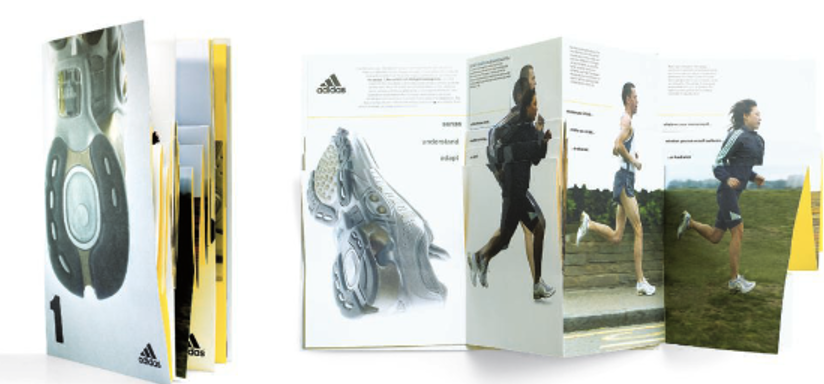
Service Design - Plans and organises people, communication, and the physical and digital components of a service to improve the interaction between a service provider and customers. Service design examines the internal infrastructure of the service provider’s operations, as well as the customer experience. Increasingly, self-service plays a role in business and government.
Software Design - Plans and creates digital applications that support specific user goals or tasks. Software design involves the totality of the digital product or service to be built by engineers and computer scientists, as well as the “look and feel” of the interaction between the user and the technological system. This work is sometimes called “Product Design” in the software industry. “Platform Design” focuses on the underlying systems on which software products can be built. Several technology companies open their platforms to third party developers of software applications.
Strategic Design - Applies design principles and methods to the systemic challenges of business and social innovation. Strategic design assists in framing problems, identifying opportunities, applying methods, and developing solutions that improve the overall performance of companies and non-profit organisations. The practice is futures-oriented and focuses on creating value for the business or organisation, customers, and society.
Type Design - Creates typefaces through attention to the form and legibility of letterforms and other characters or symbols. Some typefaces are created for specific purposes or surfaces—for example, highway signage or newspapers—or as components of a company’s identity system. Type families involve systematic variations in a typeface (i.e., in weight, proportion, and posture) that allow designers to create contrast and emphasis while maintaining visual unity through recurring formal relationships.

Image taken from: Ambrose, G. & Harris, P. The Fundamentals of Graphic Design. Bloomsbury, London. p39
Visual Design - Creates the “look and feel” of screen displays in the design of websites and software applications. These designers are responsible for the development and consistent implementation of visual concepts throughout the users’ web or software experience.
Web Design - Creates and maintains websites—images, text, videos, and animation—using programming code. Web designers are responsible for information architecture—the organisation, navigation structure, and labelling of content—used by the site to respond to user interaction.18
Develop Individual Skills
It is essential for students to understand that design is a process and not only an end product. Design thinking and strategy are integral to the design process, and students need to be aware of audience and context for what they create. By identifying different opportunities to develop your own skills and keep informed about current design practice, will ensure that your design practice continues to develop and improve.
We have already discussed the creative skills needed for graphic design, but soft skills are also important. Like most professionals, graphic designers also need to harness and hone a few non-technical skills, from communication to creativity. As graphic design jobs become more diverse, spanning into fields like extended reality, app design, and icon creation, soft skills are the abilities which transcend all job roles.
- Creativity - perhaps the most obvious demand for a graphic designer is creativity. These professionals need to constantly come up with new, fresh ideas, adjusted to the needs of each client. You’ll need to provide your clients with a range of different examples and iterations of your design
- Communication - skills are required in almost every job these days. As a graphic designer, you’ll need to be able to communicate your ideas to your target customer, and converse with them about their expectations before you design anything. Good communication will ensure you’re not making expensive mistakes or wasting your time on designs which don’t fit the brief.
- Strategy - like communication, strategy is an important skill for many roles, but it’s particularly important for designers. After communicating with your customers, you’ll need to develop a plan for how you’re going to approach your design brief. You will need to consider each step, from market research, to bringing brainstormed ideas to your clients. Part of strategy will also be learning how to use your time effectively.
- Problem solving - to some extent, problem-solving skills fall under the creativity banner for graphic design. Remember, you’re going to be receiving briefs from clients who want you to solve problems with their branding or image
- Ideation - the concept of ideation is crucial to the skills of a graphic designer. Ideation refers to the formation of concepts or ideas. In graphic design, it’s all about generating and communicating visual concepts. There are a lot of factors involved in ideation, including research, which helps to inform your decision making and design direction.
As a designer you’ll be able to work in a wide range of different environments, with minimal training and qualifications required. Although a qualification in graphic design is helpful, the most important thing will be your experience, and your ability to show traits like:
- Excellent creativity and innovation.
- Accuracy and attention to detail.
- Excellent time management and organisational skills.
- Awareness of the latest trends.
- Fantastic IT skills.
The exact traits and skills you need will usually depend on the kind of company you choose to work for. The demands on a graphic designer working with the packaging industry, or newspaper publishers will likely be different to those required for advertising or branding agencies. Graphic design skills are evolving as the graphic landscape continues to transform. The best thing you can do if you’re planning on becoming a graphic designer is stay on the cutting edge of the marketplace.
There are countless online courses and webinars available today which cater to graphic designers who want to develop their knowledge of the industry. You can also sign up for courses in the traditional educational landscape. Although courses and webinars will enhance your skills, it’s also worth noting the best way to work on your abilities as a graphic designer, is to get as much experience as you can.
Volunteering for projects or working on your own branding elements can help to enhance your skills and provide you with a better portfolio to show future clients.
